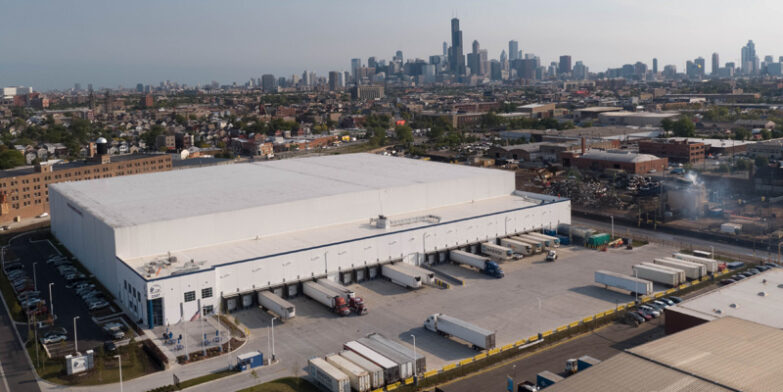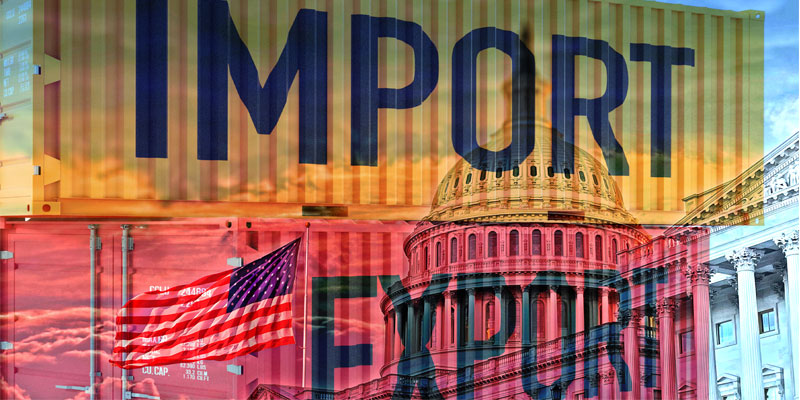
U.S. manufacturing remains subdued, though inflationary pressures linked to tariffs appear to be stabilising. The consumer price index is projected to edge slightly higher to 3.1%, while resilient domestic demand and stable employment are supporting moderate freight activity across North America.
Across the Atlantic, the UK’s Composite PMI slipped to 49.7, marking a five-month low and while weaker manufacturing data highlight ongoing challenges, slower price growth suggests headline and core inflation may ease in the months ahead.
China’s economy continues to cool, with GDP growth forecast to slow from 5.2% in Q2 to 4.7% in Q3 amid weaker retail and industrial output. This deceleration, combined with shifting trade patterns and supply chain adjustments, is reshaping global logistics flows.
Ocean Freight
Container freight rates have risen for a second consecutive week, signalling a modest recovery after nearly four months of steady decline. The latest Drewry World Container Index shows global spot prices up around 3%, with both transpacific and Asia–Europe routes gaining strength.
On U.S. inbound lanes, west coast rates increased by roughly 4%, while east coast routes rose about 6%. These movements reflect the impact of General Rate Increases (GRIs) introduced in mid-October, with additional GRIs scheduled for 1 and 15 November as carriers attempt to sustain price levels before demand weakens later in the quarter.
New U.S. port fees targeting China’s maritime industry have added significant cost pressure. Early data suggests that Chinese carriers, including Cosco Shipping and its OOCL subsidiary, incurred more than $40 million in the first week of the levy. The fees apply to Chinese-operated and Chinese-built vessels calling at U.S. ports, with rates escalating annually through 2028. Analysts estimate the impact could equate to c.$600 per container, representing a major new cost factor for transpacific trade.
Asia–Europe routes also strengthened this week, with spot prices to major European hubs rising by 2–4% as carriers seek to lift earnings ahead of annual contract negotiations. New FAK levels announced for early November are intended to stabilise prices following months of rate erosion.
Despite these short-term gains, Drewry’s latest outlook warns that a weakening supply–demand balance in the months ahead may reverse recent improvements, with spot rates expected to come under renewed downward pressure once current GRI effects and fee-driven volatility subside.
Air Freight
Global air cargo activity rebounded sharply in mid-October following widespread holiday disruptions across Asia. After a 3% decline the previous week, total worldwide tonnage rose 6% week on week, led by a strong 14% increase from Asia Pacific origins. This recovery pushed Asia’s overall export volumes around 8% above the same period last year. Excluding Asia’s contribution, global growth would have been modest, reflecting how dominant the region’s rebound was in restoring balance to international airfreight flows.
Average global airfreight rates also climbed, recovering to pre-holiday levels. Rates increased around 3% week on week, driven mainly by a 2% rise from Asia Pacific and the higher proportion of long-haul, high-yield cargo. Pricing now sits slightly above late-September levels but remains several percentage points below last year’s equivalent period.
The post-holiday recovery was particularly pronounced on Asia–U.S. lanes, where volumes surged 17% week on week. Shipments from China and Hong Kong jumped more than 20%, while South Korea and Taiwan recorded even sharper rebounds as operations normalised following national holidays. Asia–Europe volumes also grew 14% during the same period.
Spot rates from Asia Pacific to the U.S. rose strongly, led by China, Japan, and South Korea, taking China–U.S. pricing to its highest point since spring. This surge reflects tightening capacity and front-loaded shipments as U.S. importers accelerate orders ahead of new tariffs on Chinese goods expected in November.
Elsewhere, India–U.S. airfreight also strengthened, with tonnages rising more than 10% ahead of Diwali-related congestion. Despite ongoing volatility, India’s export volumes to both the U.S. and Europe are now above last year’s levels, underscoring a resilient recovery in South Asian air trade.
Trucking
Truckload capacity across the U.S. remains broadly stable, though certain regional imbalances are tightening supply and lifting spot prices in select lanes. Seasonal peaks, combined with lower import volumes and recent enforcement actions against unqualified or undocumented drivers, have produced isolated rate increases, but overall pricing remains largely unchanged since late summer.
Throughout 2025, several short-lived surges have occurred around national holidays and inspection weeks, but rates have consistently retreated once those events passed. Current trends point to a typical fourth-quarter pattern, with spot rates edging higher into the holiday season before easing again in early 2026.
Despite subdued freight demand, truckload rates are rising slightly, suggesting factors such as equipment repositioning and market imbalances are exerting more influence than volumes themselves. The Cass Truckload Linehaul Index increased modestly in September, up around 1–2% month on month and year on year, reflecting limited but steady upward pressure on pricing.
Keep your supply chain moving with confidence.
Our strong carrier relationships and global purchasing power keep costs competitive, even in shifting markets. Paired with real-time, data-verified tracking and proactive purchase order management, we deliver the visibility and control you need to plan ahead and adapt fast.
See how Global Forwarding can help you optimise performance and reduce risk across your air and ocean freight network.
Contact Adam Davies, Vice President, Global Forwarding Ltd.





